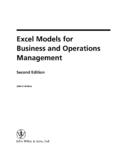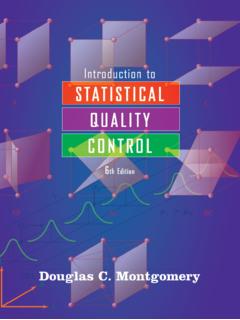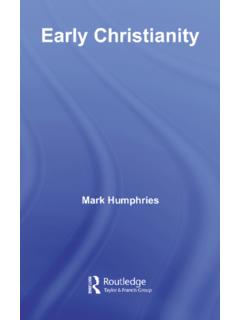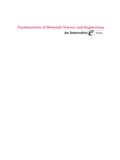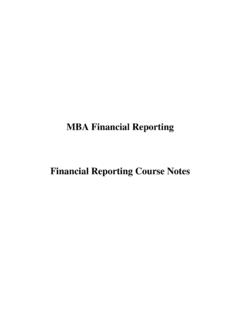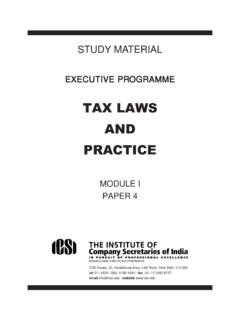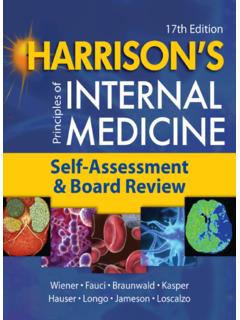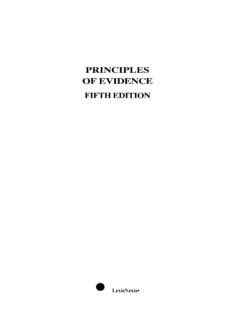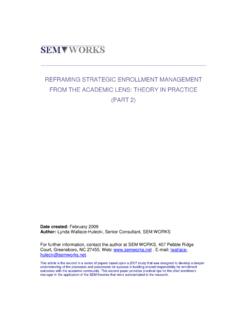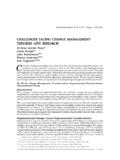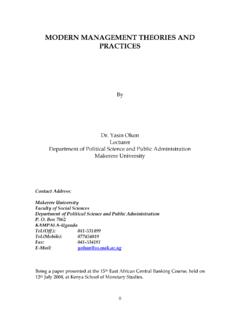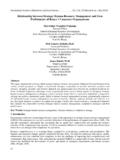Transcription of Journal of Management - dl4a.org
1 Journal of Management Resource-based theories of competitive advantage: A ten-year retrospective on the resource-based view Jay B. Barney Journal of Management 2001; 27; 643. DOI: The online version of this article can be found at: Published by: On behalf of: Southern Management Association Additional services and information for Journal of Management can be found at: Email Alerts: Subscriptions: Reprints: Permissions: Citations Downloaded from at SAGE Publications on May 13, 2009. Pergamon Journal of Management 27 (2001) 643 650. Resource-based theories of competitive advantage: A ten- year retrospective on the resource-based view Jay B. Barney Fisher College of Business, The Ohio State University, Columbus, OH 43210, Received 3 April 2001; received in revised form 19 June 2001; accepted 20 September 2001. Abstract The resource-based view can be positioned relative to at least three theoretical traditions: SCP- based theories of industry determinants of firm performance, neo-classical microeconomics, and evolutionary economics.
2 In the 1991 article, only the first of these ways of positioning the resource- based view is explored. This article briefly discusses some of the implications of positioning the resource-based view relative to these other two literatures; it also discusses some of the empirical implications of each of these different resource-based theories . 2001 Elsevier Science Inc. All rights reserved. 1. Introduction Positioning an argument relative to the received literature is, perhaps, the most difficult part of writing a theoretical essay. Not only does positioning help define and limit an argument's contribution, it also goes a long way in determining the structure of that argument and the issues that it will and will not address. All this is made more complicated by the fact that any one theoretical argument can be positioned in alternative ways and that each of these alternatives can generate important, but different, insights.
3 That is, there typically is no one best way of positioning a theoretical essay, and whatever choice is made with respect to positioning necessarily involves empha- sizing some insights at the expense of others. Indeed, altering the positioning of an essay can * Corresponding author. Tel.: 1-614-688-3161; fax: 1-614-292-7062. E-mail address: ( Barney). 0149-2063/01/$ see front matter 2001 Elsevier Science Inc. All rights reserved. PII: S 0 1 4 9 - 2 0 6 3 ( 0 1 ) 0 0 1 1 5 - 5. Downloaded from at SAGE Publications on May 13, 2009. 644 Barney / Journal of Management 27 (2001) 643 650. change the argument so much that these alternatives can, at one level at least, appear to be different theories . Positioning issues were important when my 1991 Journal of Management paper was being written. At least three alternatives presented themselves: positioning the resource-based view relative to SCP-based theories of competitive advantage (Porter, 1980), positioning this view relative to neo-classical microeconomics (Ricardo, 1817), or positioning it relative to evo- lutionary economics (Nelson & Winter, 1982).
4 Of these three, I chose the first. However, the article could have just as well been written by adopting one of these other two positioning alternatives. And each of the resulting papers would have generated different insights compared to the article that was actually published. In an important sense, these three different ways of positioning the resource-based view generate what could almost be described as three different resource-based theories of competitive advantage (Schulze, 1994). Of course, these theories are not entirely different. For example, they all share a common set of assumptions, including the assumption that resources and capabilities may be heter- ogeneously distributed across firms and the assumption that these differences may be long lasting (Barney, 1991). These theories also share a common emphasis on understanding why some firms can consistently outperform others. These commonalities identify these theories as examples of the broader resource-based view.
5 However, differences among these theories are also important. While they share critical assumptions, they emphasize very different implications of those assumptions. And while they all focus on explaining sustained performance differences across firms, they adopt different definitions of performance. Given these differences, it is not surprising that these three resource-based theories have generated three different empirical literatures within the broader resource-based view. The purpose of this paper is to explore the implications of positioning the resource-based view relative to SCP-based theories of competitive advantage, relative to neo-classical microeconomics, and relative to evolutionary economics. The paper begins by briefly describing what the 1991 paper might have looked like if it had adopted these latter two positioning alternatives, and then examines how these three resource-based theories have evolved in the literature since 1991.
6 2. The resource-based view and neo-classical microeconomics Neo-classical microeconomics, or neo-classical price theory as it is sometimes called, focuses on how market forces determine the quantity, quality, and price of goods and services sold in a market. This theory adopts many of the same assumptions as the broader resource-based view that economic actors (be they firms or people) are boundedly rational utility maximizers, that markets can vary in their competitiveness, that information can vary in how it is diffused across a market, and so forth. Indeed, there is only one important difference between the assumptions of neo-classical microeconomics and the resource-based view. The former adopts the assumption that, in general, resources and capabilities (what neo-classical microeconomists call factors of Downloaded from at SAGE Publications on May 13, 2009. Barney / Journal of Management 27 (2001) 643 650 645.)
7 Production) are elastic in supply. This means that when demand for a particular resource or capability increases, the price of acquiring this resource will also increase, and the total amount of this resource made available to the market will also increase. For example, if there is a shortage of engineering talent in a particular market, the price of this talent in this labor market will increase, and the number of people who make their engineering talent available in this market either by training to become engineers or by moving from another market to this market will increase. The resource-based view acknowledges that many factors of production may, in fact, be elastic in supply. However, this view also argues that because some resources and capabil- ities can only be developed over long periods of time ( , path dependence), because it may not always be clear how to develop these capabilities in the short to medium term ( , causal ambiguity), and because some resources and capabilities cannot be bought and sold ( , social complexity), at least some factors of production may be inelastic in supply (Dierickx & Cool, 1989; Barney, 1991).
8 Supply inelasticity implies that firms that possess these kinds of resources and capabilities may be able to generate above normal profits, and these profits not lead to increased supply of these resources and capabilities in the short term, and perhaps not even in the long run. Supply inelasticity thus can become a source of sustained competitive advantage (Peteraf, 1993). Of course, some neo-classical microeconomists have examined the profit implications of factors of production that are inelastic in supply. The best known of this work was done by Ricardo nearly 200 years ago (Ricardo, 1817). Ricardo demonstrates how these kinds of factors of production can generate profits for firms by analyzing the profitability of farms when the supply of fertile land is fixed. However, Ricardo implicitly assumes that relatively few factors of production have the attributes that make them fixed in supply. In this sense, the resource-based view is simply an extension of Ricardian economics but with the assertion that many more factors of production besides land are inelastic in supply (Peteraf, 1993).
9 Adopting neo-classical microeconomics as the theory against which to position the arguments developed in the 1991 article would have helped address many of the controver- sies that have emerged around the resource-based view since 1991. For example, there continues to be significant debate in the literature about whether or not equilibrium analysis can be appropriately applied in resource-based analyses (Mahoney & Pandian, 1992). If the resource-based view is seen as a logical extension of neo-classical microeconomics, this debate becomes moot, since it is clear that the only acceptable theories in neo-classical microeconomics are equilibrium theories . Also, if positioned this way, controversy about the determination of the value of a firm's resources, and thus controversy about whether or not the resource-based view is tautological, would also have been moot (Priem & Butler, 2001), since in this context it becomes clear that the value of a firm's resources and capabilities is determined by the market context within which a firm is operating (Barney, 2001).
10 Indeed, the advantages of positioning the resource-based view relative to neo-classical microeconomics are so significant, I actually wrote a paper that did so (Barney, 1986a). Published in 1986 in Management Science, this paper develops the core resource-based arguments, but does so not relative to SCP-based explanations of firm performance but relative to neo-classical microeconomics. In that paper, the concept of strategic factor markets is introduced, and it is shown that Downloaded from at SAGE Publications on May 13, 2009. 646 Barney / Journal of Management 27 (2001) 643 650. when these markets are perfectly competitive, acquiring the resources necessary to create imperfectly competitive product markets will absorb all the profits that this imperfect competition would otherwise create. Thus, for firms to obtain economic rents, they must acquire the resources and capabilities needed to conceive of and implement strategies in imperfectly competitive strategic factor markets the kinds of markets studied by Ricardo.

